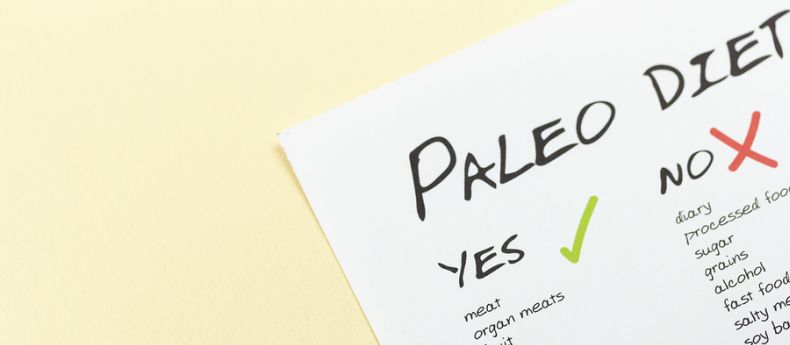
Unearthing the Paleo Diet
Paleo is the buzzword in weight loss these days, especially if you find yourself in a CrossFit gym or anywhere near Pinterest. So what exactly is the Paleo diet and, better yet, is it effective?
The Paleo diet (also known as the Caveman diet or Stone-Age diet) is based on the premise that diseases such as obesity, diabetes, and heart disease are the result of civilization and a Western diet; thus, to combat such ailments we should return to a pre-agrarian, hunter-gatherer diet like that of our ancestors. As such, Paleo consists of about 60% animal protein and 40% plants (fruits, vegetables, fungi, nuts, and seeds), while cutting out agrarian era grains, sugar, salt dairy, and legumes.
As far as the nutrition is concerned, at first glance Paleo may seem like a pretty good approach because it focuses on less-processed food and more plants and, well, what dietitian doesn’t like that?! The reality though, is that Paleo falls short on carbohydrate and exceeds the limit on fat, as recommended by the 2010 Dietary Guidelines for Americans. Paleo is not only backed by very little, if any, conclusive scientific evidence (nutritional or otherwise), but also opens the door for several nutrient deficiencies. With such a restrictive menu, you lose out on essential nutrients like phosphorous, magnesium, calcium, and vitamin D in dairy; B vitamins, fiber, and antioxidants in grains; and lean, low-calorie, high-fiber protein sources from legumes. Additionally, by bringing animal protein to the forefront, saturated fat and cholesterol intake are likely to increase. Research consistently shows that people who consume diets higher in meat have increased incidence of hypertension, hyperlipidemia, heart disease, diabetes, metabolic syndrome, and certain cancers. Oh, did I mention they also tend to have higher Body Mass Indexes (BMIs)?
Like many other low-carbohydrate, high protein diets, initial weight loss occurs but is not typically sustained. Let’s explore this, shall we? Glucose, the simplest form of carbohydrate, is the body’s primary and preferred source of energy. When carbohydrate intake is restricted (like by cutting out grains), the body quickly uses up its stores of energy from the liver and muscles (in the form of glycogen) and has to find alternative fuel. Because the body feels like it’s going into starvation mode, it starts breaking down fat (but hopefully not muscle!) and rapid weight loss occurs. Good, right? Sadly, all signs point to no. The weight loss that results from low-carb intake is actually your body using up its glycogen stores and losing water, not losing fat. So while Paleo and the like may be initially effective for weight loss, it is often not sustainable.
There have only been a couple of short-term, controlled studies of Paleo’s effectiveness for weight loss and managing chronic disease, all of which had very few participants. The U.S. News and World Report put Paleo tied for last place in its ranking for Best Diets Overall in 2014 – meaning it fell short in every area including weight loss, ease to follow, and heart health. So, this dietitian (along with Academy of Nutrition and Dietetics) would conclude that, as an approach to weight loss and chronic disease management, one should look elsewhere. Paleo may prove too restrictive, inconvenient, and expensive to follow long-term, and likely will not result in the desired health or weight loss outcomes.





